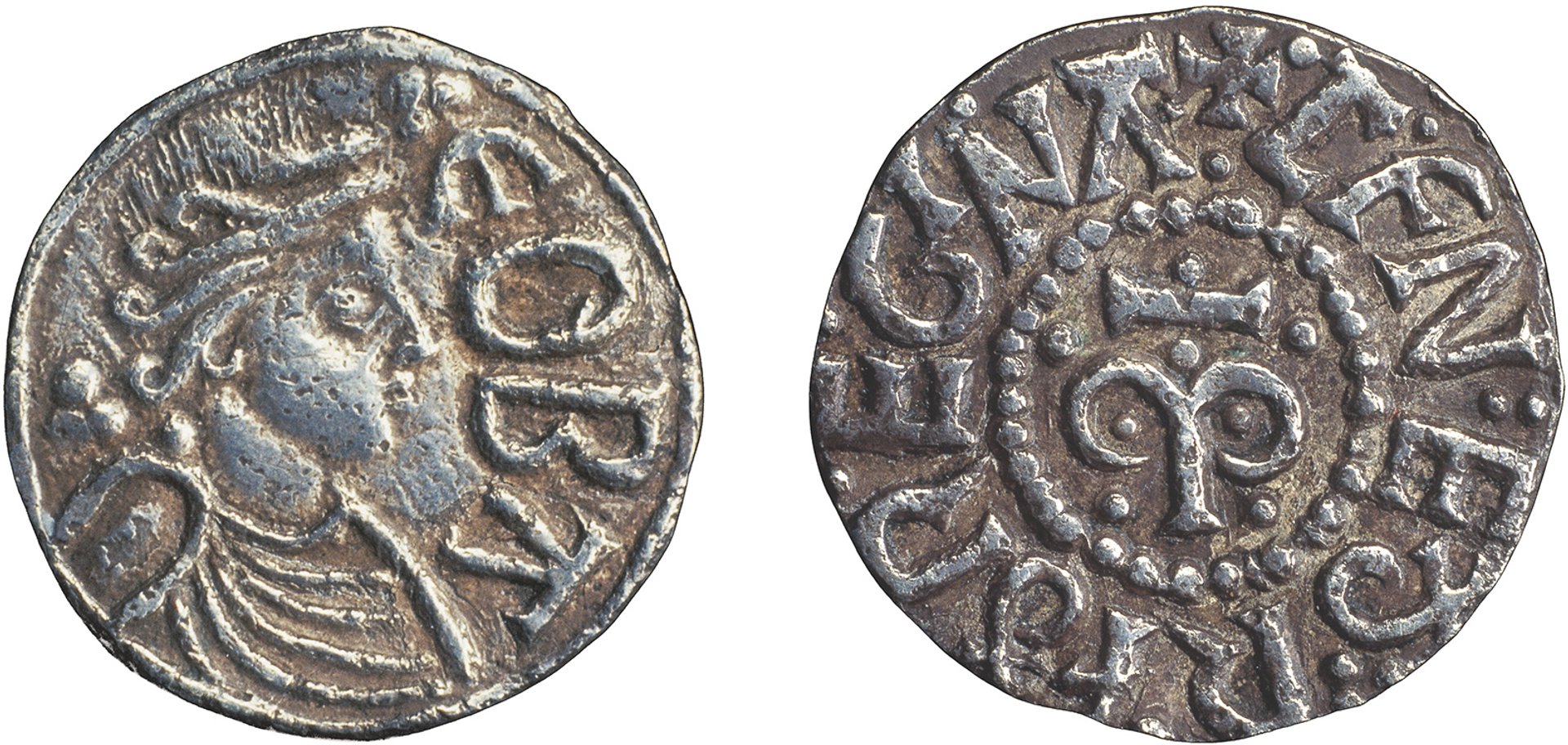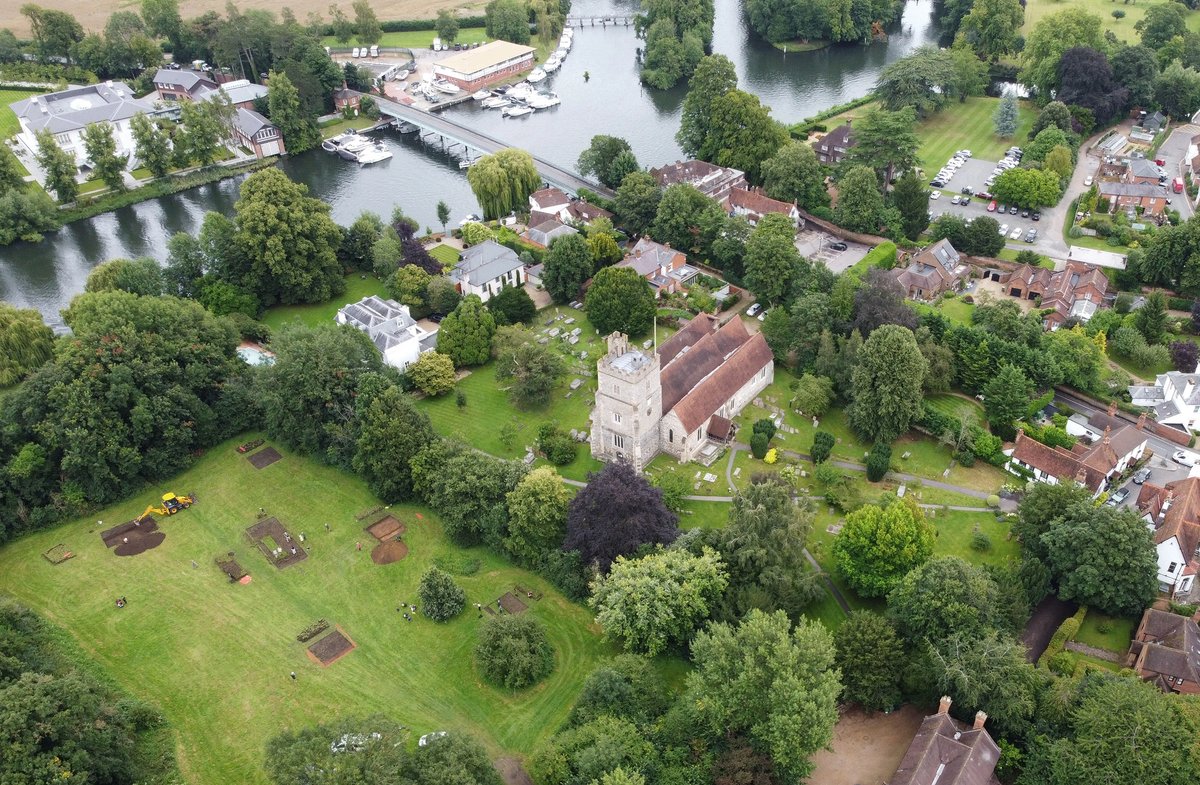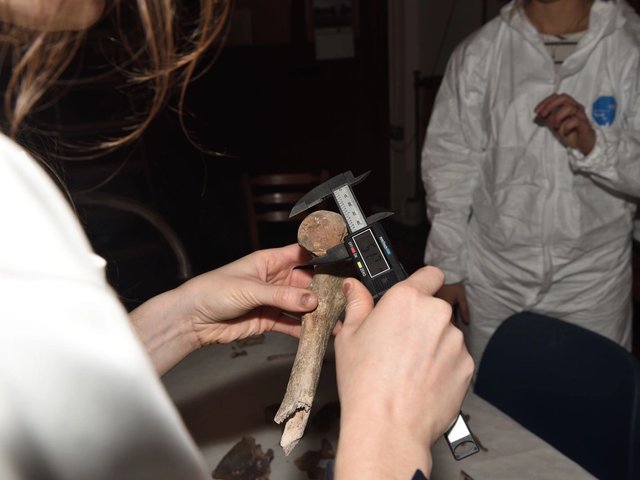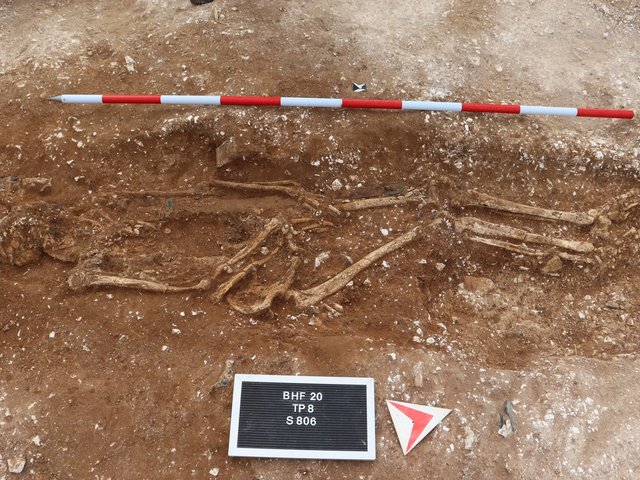The site of a lost Anglo Saxon monastery, which may hold the grave of the powerful queen who founded it, has been rediscovered in the heart of the Berkshire village of Cookham. Its most famous resident was the artist Stanley Spencer, who celebrated his native village as a literal paradise on earth in his work—and unknowingly included the site of the lost monastery in the grounds of Holy Trinity church in many paintings.
Archaeologists from the University of Reading, working with local volunteers, have now found traces of the timber buildings that housed the monks and nuns, and a wealth of objects giving striking insights into their lives including food remains, pottery vessels used for cooking and eating, and—suggesting the regime was not punishingly austere—a delicate bronze bracelet and a dress pin, presumably worn by female members of the community.
The monastery was one of many established along the banks of the Thames, at the time a major trading route, and a contested boundary between the kingdoms of Mercia and Wessex. Written sources documented its existence and rule by Queen Cynethryth, wife of the Mercian King Offa (of Offa’s Dyke fame), a powerful woman ruler and uniquely portrayed on a silver coin in her own right, but the site had been lost. The excavation proves that it was built like the present medieval parish church—where some Anglo-Saxon masonry is said to survive—on a gravel island raising it above the frequent floods on this stretch of the river.

Coins featuring Queen Cynethryth, the only Anglo Saxon queen to feature on coins in her own right British Museum
Gabor Thomas, the Reading university archaeologist who led the excavation, says: “The lost monastery of Cookham has puzzled historians, with a number of theories put forward for its location. We set out to solve this mystery once and for all.”
“Despite its documented royal associations, barely anything is known about what life was like at this monastery, or others on this stretch of the Thames, due to a lack of archaeological evidence. The items that have been uncovered will allow us to piece together a detailed impression of how the monks and nuns who lived here ate, worked and dressed. This will shed new light on how Anglo Saxon monasteries were organised and what life was like in them.”
He described Cynethryth as “a fascinating figure”, influential in her own right. “It is known that when the powerful European leader Charlemagne wrote to his English counterparts, he wrote jointly to both King Offa and Queen Cynethryth, giving both equal status.”
Cynethryth became an Abbess after the death of Offa in AD796. She died some time after AD798, and Thomas said it was “very likely” that she was buried at Cookham. The team hopes to return to excavate further next summer.




